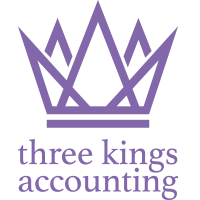Facing financial difficulties can cause a great deal of stress as well as taking its toll on health and relationships. There are a number of options available, but it is important to tackle the problem as early as possible.
Here we outline the options available and their implications for both personal and corporate insolvency.
Personal insolvency – bankruptcy
This is a formal legal process by which individuals deal with debts they are unable to pay. The bankruptcy process ensures that the assets of the individual are divided amongst those to whom money is owed (creditors). It is a way to make a fresh start free from the onerous debts, but the process does have an effect on your credit rating for six years after the order is made.
It is possible to declare yourself bankrupt, but creditors can also apply to make an individual who owes them money bankrupt too.
Once declared bankrupt the Official Receiver (or an insolvency practitioner) is appointed to take control of the individual’s assets and they are referred to as the ‘trustee in bankruptcy’. It is a legal requirement to co-operate with them in the orderly disposal of your assets. All assets are essentially transferred to the trustee, but you will be allowed to keep items which are necessary for work along with everyday household items such as furniture and clothing. The effect of bankruptcy is to freeze your bank accounts. It is possible to open a new account after the date of the bankruptcy, but you must tell the bank or building society that you are bankrupt.
If you own your home this can be sold to pay your creditors although there are protections if you have a partner or children living with you. A trustee can also sell your motor vehicle but can ‘exempt’ this if deemed necessary for work or family circumstances.
What if I’m self-employed?
If you are self-employed your business will be closed with any business assets being claimed by the trustee. You can commence trading again but there are a number of strict requirements which you will need to follow.
What will I have to pay?
The trustee will realise your assets for the benefit of your creditors but, if you can afford it, the trustee may require you to make payments towards your debts from your income for up to three years. There is a process for establishing an appropriate level of contribution based on your income and expenditure.
When does bankruptcy end?
Discharge from bankruptcy usually occurs after 12 months but can be extended if you don’t co-operate with your trustee.
Are there other options?
Yes, there are, which is why it is important to seek professional advice on the most appropriate course of action as early as possible. There are alternatives to bankruptcy which may be preferable:
An Individual Voluntary Arrangement (IVA)
An agreement to settle all or part of your debts which can include regular payments or lump sum contributions. This is a formal agreement administered by an insolvency practitioner which can be quite onerous but essentially prevents creditors from taking action against you and avoids bankruptcy. However, failure to comply with the terms of the arrangement can ultimately still result in bankruptcy.
Debt management plan
An arrangement via a debt management company which will collect contributions from you and distribute them between your creditors. This type of arrangement is only available for unsecured borrowings.
Debt relief order
Available where debts are less than £30,000, where you have negligible spare income or assets which can be realised. This route has similar restrictions to bankruptcy.
Corporate insolvency
A company is deemed to be insolvent when it is unable to pay its debts as they fall due or has liabilities which exceed its assets. There are a number of legal procedures for dealing with a company’s insolvency but the main avenue for this is to liquidate the company. Creditors can take action to recover the amounts owed to them through the courts which can result in an application to wind up the company if those debts remain unpaid. The directors of the company can also apply to wind up the company themselves.
If a company is to be wound up, or liquidated, it will cease trading and ultimately be struck off from the Companies House register and will cease to exist. An insolvency practitioner is appointed to act as the liquidator which involves realising the company’s assets, settling any outstanding legal matters, before distributing any available funds to the creditors.
Corporate Insolvency and Governance Act 2020
The act introduced some temporary measures which expired in March 2022 however it also introduced some permanent changes to the insolvency process. This includes a company moratorium where, in certain circumstances, the company is given a statutory breathing space of 20 days where the directors retain control and are able to consider restructuring options without pressure from creditors. In certain circumstances and with the approval of the court this can be extended to 40 days.The moratorium is overseen by an insolvency practitioner, but responsibility for the day to day running of the company remains with the directors. The introduction of a moratorium is an important change to insolvency law in the UK that moves it closer towards the rescue culture seen in the US.
What are my responsibilities as a director?
The liquidator is appointed by a court to wind up the company. The liquidator has the responsibility of investigating why the company became insolvent and will ask you to provide the company’s records and other information about the circumstances which led to the company being liquidated. You will be released from your obligations as a director on the appointment of the liquidator but have an ongoing legal obligation to co-operate with the liquidator.
What happens to me after an insolvent liquidation?
The liquidator will consider whether the insolvency resulted from conduct by the directors which is deemed to be unfit and contributed to the failure of the business. If that is the case a disqualification order can be sought which prevents you from acting as a director of a company for up to 15 years in the most serious cases.
Can I be liable personally for the company’s debts?
There are provisions in UK insolvency legislation for ‘wrongful trading’ which means that you could potentially be personally liable for some of the company’s debts. This occurs if you allowed the company to continue trading past the point at which it was apparent that an insolvent liquidation could not be avoided and took no action to minimise the losses faced by creditors.
Are there other options?
Yes, there are, which is why it is important to seek professional advice on the most appropriate course of action as early as possible. The following options are available:
Company Voluntary Arrangement (CVA)
A binding agreement supervised by an insolvency practitioner which provides for the payment of all, or part of the company’s debts over a period of time. This requires the agreement of at least 75% of the creditors. It does, however, mean that the company is able to continue trading during the CVA and afterwards but a failure to comply with the terms of the arrangement can ultimately result in the company being liquidated.
Administration
This process essentially passes control of the company to an insolvency practitioner, the Administrator, which has the effect of preventing the creditors from taking legal action to recover their debts. The Administrator’s role is to identify potential courses of action to make the company profitable again or to realise more funds than simply liquidating the company. It may be possible to sell the business as a going concern, for example.
How we can help
Whether facing bankruptcy on a personal level or in respect of a company in which you are a director it is vital that professional advice is obtained at the earliest opportunity so we can advise you of the options available. Please contact us for more information.


